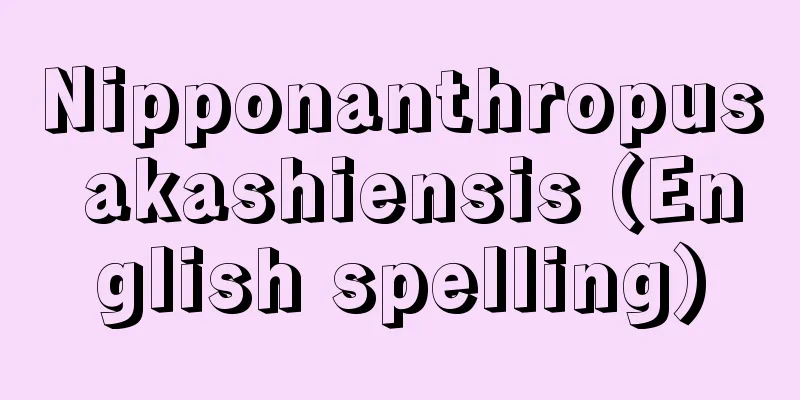Kondo Isami

|
Year of death: April 25, 1861 (May 17, 1868) Year of birth: Tenpo 5.10.9 (1834.11.9) During the Meiji Restoration, he was the head of the Shinsengumi under the control of the Kyoto Shugoshoku. He was the third son of Miyagawa Kyujiro and his mother Ei from Kamiishiwara Village, Tama County, Musashi Province (Nomizu Town, Chofu City, Tokyo). His given name was Masayoshi, his childhood name was Katsugoro, he was commonly known as Katsuta and Isamu, and later he was called Okubo Yamato Fujiwara Tsuyoshi. His pseudonyms included Kondo Kuranosuke and Konda Yuhei. He was asked by Kondo Shusuke, the third head of the Tennen Rishin-ryu school, to take on the name of the fourth head, but prior to that he was adopted by Shusuke's family, the Shimazakis, and took the names Shimazaki Katsuta and Shimazaki Isamu, before going on to be called Kondo Isami Fujiwara Masayoshi. His pen names were Gaishi and Toshu. On February 8, 1863 (Bunkyu 3), he served as the first officer and lodging manager for the Joryo Roshigumi (a group of roshi recruited by the shogunate to provide extra guards for the shogun when he traveled to Kyoto) that included Kiyokawa Hachiro, and at one time was the head of the third group, which also included Hijikata Toshizo and Okita Souji. He did not accompany Kiyokawa and others back to Kyoto, but remained in Kyoto and became the head of the Shinsengumi's parent group, and on September 18 of the same year, he purged Serizawa Kamo and became the head of the Shinsengumi. On June 5, 1864 (July 8, 1864), he attacked and killed Sonno Joi patriots at Ikedaya, earning him fame for his bravery in the so-called Ikedaya Incident. On November 4, 1865 (Keio 1), he accompanied Nagai Suisuke Masatoshi, a Choshu envoy. He left for Hiroshima under the name Kondo Kuranosuke with Ito Koshitaro, Takeda Kanryusai, and Ogata Shuntaro. Shishido Bingo of the Choshu Domain was questioned at Kokutai-ji Temple. On June 10, 1813, Kondo, Hijikata, Okita and 105 other Shinsengumi members were summoned by the shogunate. On October 7, 1813, they received intelligence from Murayama Kenkichi, who had infiltrated the Tosa Rikuentai, that on October 15, they received intelligence of an armed uprising against the shogunate by the Western Army, and reported it to the Kyoto Shugoshoku, which became one of the factors that led the shogunate to decide to return power to the Emperor. On November 15 (December 10) of the same year, Sakamoto Ryoma, Nakaoka Shintaro and others were attacked and suspected, and they assumed that this was due to a tip-off by Koshitaro, who had left the Shinsengumi, and three days later, they ambushed Koshitaro, Todo Heisuke, Keuchi Arinoshin, Hattori Takeo and others at Shichijo Abura-no-koji. On December 18, 1813, they were shot by Shinohara Yasunoshin and Abe Juro near Sumizome on the Fushimi Kaido road, and received a bullet wound in their right shoulder. After the Battle of Toba-Fushimi, they returned to Edo and organized the Koyo Chinbutai, but were defeated and fled at Katsunuma in Koshu. They surrendered to the government forces at Nagareyama in Shimousa (Chiba Prefecture). In April 1868, they were beheaded at Itabashi. Their heads were displayed there, and in April of the following year, they were put on display at Sanjogawara in Kyoto. <References> Hirao Michio, Shinsengumi Shiroku (Yoichi Tsuri) Source: Asahi Japanese Historical Biography: Asahi Shimbun Publications Inc. About Asahi Japanese Historical Biography |
|
没年:明治1.4.25(1868.5.17) 生年:天保5.10.9(1834.11.9) 幕末維新期,京都守護職傘下の新選組局長。武蔵国多摩郡上石原村(東京都調布市野水町)宮川久次郎と母えいの3男。名は昌宜,幼名勝五郎,通称勝太,勇,のちに大久保大和藤原剛と称した。変名に近藤内蔵助,近田勇平など。天然理心流3世近藤周助に望まれ4世を襲名するが,それに先立ち周助の実家島崎の養子となり島崎勝太,島崎勇を名乗ったのち,近藤勇藤原昌宜と称した。字を外史,東洲と号す。文久3(1863)年2月8日清河八郎ら上洛浪士組(将軍上洛の列外警護として幕府が募った)では先番宿割役を務め,一時は土方歳三,沖田総司らが属す三番組の小頭を任じた。清河らの帰府に従わず,京都に残留して新選組母胎の局長,同年9月18日芹沢鴨を粛清し新選組局長として君臨。元治1年6月5日(1864年7月8日)池田屋に尊攘派志士を襲撃,殺傷した,いわゆる池田屋騒動で勇名を馳せる。 慶応1(1865)年11月4日長州訊問使永井主水正尚志に随行。近藤内蔵助を名乗って,伊東甲子太郎,武田観柳斎,尾形俊太郎と共に広島へ出立。長州藩宍戸備後を国泰寺で訊問。同3年6月10日近藤,土方,沖田ら新選組隊士105人が幕府の召しかかえとなる。同年10月7日土佐陸援隊に潜入させた村山謙吉から,10月15日西軍の武力討幕蜂起の諜報を得て京都守護職に報じるが,これは幕府に大政奉還を決意させるひとつの要因となった。同年11月15日(12月10日),坂本竜馬,中岡慎太郎らが襲撃され容疑を受けると,それを新選組から離脱した甲子太郎の密告によるものと判断,3日後,七条油小路において甲子太郎,藤堂平助,毛内有之進,服部武雄らを要撃した。同年12月18日伏見街道墨染辺りで,篠原泰之進と阿部十郎に狙撃され右肩に銃創を負う。鳥羽・伏見の戦を経て,江戸に引き揚げ後,甲陽鎮撫隊を組織するも甲州勝沼で敗走。下総流山(千葉県)で官軍に投降。明治1(1868)年4月,板橋において斬首。首級は同所に晒され,さらに翌閏4月,京都の三条河原に梟首。<参考文献>平尾道雄『新撰組史録』 (釣洋一) 出典 朝日日本歴史人物事典:(株)朝日新聞出版朝日日本歴史人物事典について 情報 |
Recommend
Ushihara-so - Ushihara-no-sho
Daigoji Temple estate in Ono County, Echizen Provi...
Fire watchtower - Hinomiyagura
A watchtower is a tower that people climb constan...
Sonatine - sonatina (English spelling) Italian
A musical term. A contraction of sonata, commonly...
Lebbek-tree (English spelling)
...It is also planted along streets and in parks....
Stick binding - Stick binding
(1) The title of a Kyogen piece. Written as "...
Abū al-Maāsin Azraqī (English spelling)
Persian poet. Born in Herat, his father was a boo...
George Horace Gallup
American pollster. He rose to fame when he predic...
Kinkazan Seto
A channel between the Oshika Peninsula and Kinkaza...
Urago - Urago
The central settlement of Nishinoshima Town in Doz...
Wonosobo Region - Wonosobo
…The Yoruba of West Africa have two slaves sleep ...
Kaya clan
A noble family since ancient times, whose main bas...
Prosper Mérimée
French author. Born in Paris on September 28th. H...
Gough's
…A volcanic island in the South Atlantic Ocean, a...
Kishimoto Yuzuru - Kishimoto Yuzuru
A scholar of Japanese classics from the late Edo ...
Gowon, Y.
...However, immediately after the promulgation of...

![Substitute fluid - Ersatzflüssigkeit [Germany]](/upload/images/67cc1af672cd9.webp)







